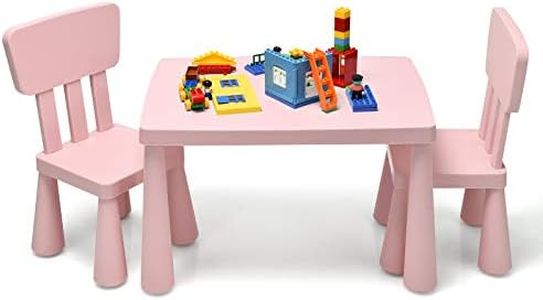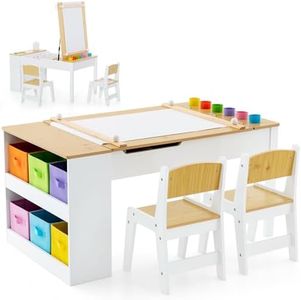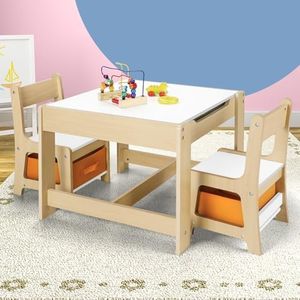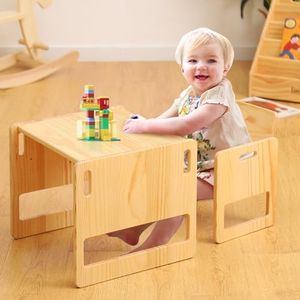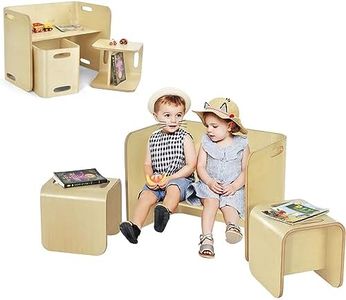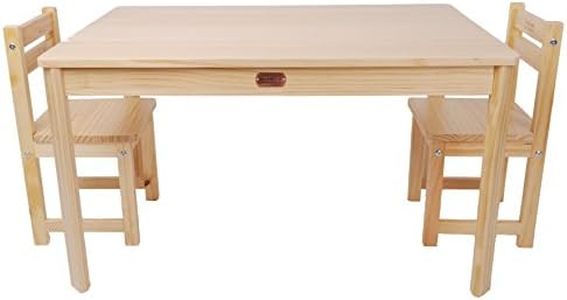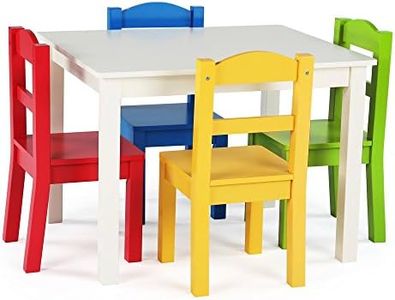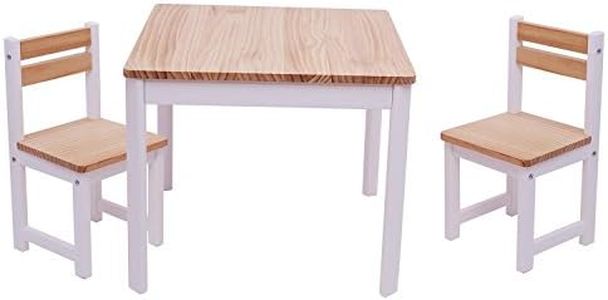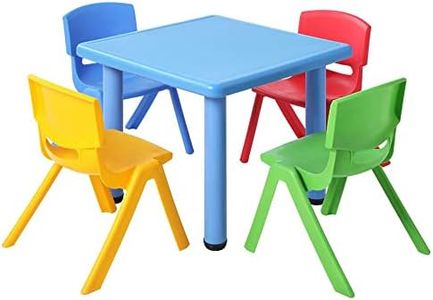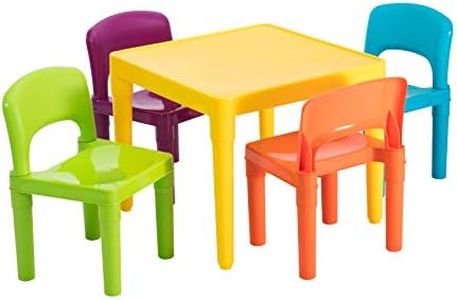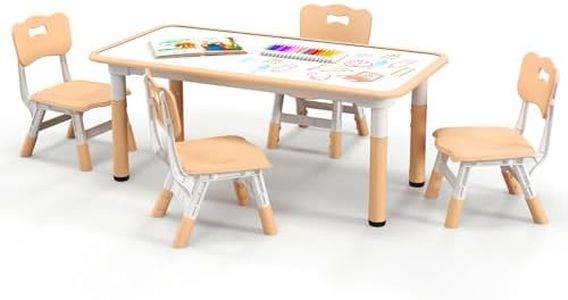We Use CookiesWe use cookies to enhance the security, performance,
functionality and for analytical and promotional activities. By continuing to browse this site you
are agreeing to our privacy policy
10 Best Kids Table And Chair Sets
From leading brands and best sellers available on the web.Buying Guide for the Best Kids Table And Chair Sets
Choosing a kids' table and chair set can make a big difference in your child’s comfort, creativity, and learning environment. The right set encourages play, crafts, reading, and even meals in a space that feels just right for children. The key is to find a set that fits your space, matches your child’s size and age, and is safe and easy to use. Before choosing, think about where you will use the set, what activities your child will do, and how long you want the set to last as your child grows.MaterialThe material of the table and chairs is important because it affects how durable, safe, and easy to clean the set will be. Common choices include wood, plastic, and sometimes metal. Wooden sets are often sturdy and look classic, but may be heavier and need occasional maintenance. Plastic sets are light, often more colorful, and usually easier to clean, making them great for younger kids or messy activities. Metal is less common for young children but can be found in combination with other materials. Choose wood if you want something long-lasting and stable, plastic if you need lightness and easy cleaning, and avoid metals unless specifically designed for younger children for extra safety.
Size and HeightThe size and height of the set are critical for comfort and safety. A table and chairs that are too high or too low will be uncomfortable and can even lead to falls. Sizes are often grouped by age ranges—toddler, preschool, and early elementary. For toddlers, sets are very low to the ground, making it easy to climb in and out. Preschool sets are a bit higher, generally matching the average height for 3-5 year olds. Larger sets are designed for children six years and older. Measure your child’s height (and the space where you plan to put the set), then check recommended age or height charts provided by the manufacturer to match up. It’s best to go for a set that lets your child sit with their feet flat on the ground while their knees are bent at a right angle.
Safety FeaturesSafety features are crucial for any child’s furniture. This includes rounded edges, smooth surfaces, non-toxic finishes, and sturdy construction that won’t tip over easily. Rounded edges help prevent injuries if your child bumps into furniture. Non-toxic finishes mean the paint or coating is safe in case touched or licked. Strong joints and solid legs prevent wobbles and tipping. Always check labels and product descriptions for information about safety testing and certifications. If your child is very young or tends to be active, prioritize sets with extra safety features.
Ease of CleaningKids’ furniture can get messy fast, so ease of cleaning should be on your checklist. Some materials wipe clean with a damp cloth, while others can stain or absorb spills. Plastic and laminated surfaces are usually most stain-resistant and easy to wipe down, making them a smart choice for art or snack times. Wooden surfaces may need special cleaners or maintenance, especially if unfinished. If you expect a lot of crafts or food spills, pick a set that is designed for quick cleaning.
Number of PiecesSets can come in different sizes, with varying numbers of chairs and sometimes even benches or storage options. The standard is a table and two chairs, but larger sets may include four chairs or even extra stools or benches. Consider how many children will use the set regularly—if you have one child, a smaller set will do; for siblings or regular playdates, you might want more chairs. If storage is important to you, look for sets with built-in boxes, baskets, or shelves.
Design and AestheticsWhile design might seem less important, it can really influence how much your child enjoys using their table and chairs. Sets designed with child-friendly colors, shapes, or favorite themes can make kids excited and more likely to use them. Some sets blend into home décor, while others are brightly colored and playful. Think about whether you want the set to match existing furniture or stand out as a fun accent in your child’s room or play area.
